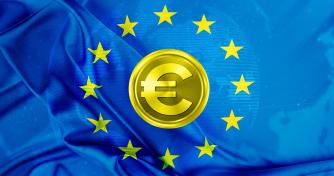 The two-class system of regulation plaguing Europe
The two-class system of regulation plaguing Europe The two-class system of regulation plaguing Europe
Non-custodial crypto asset providers remain outside the MiCAR framework, posing potential financial crime risks.

Cover art/illustration via CryptoSlate. Image includes combined content which may include AI-generated content.
The following is a guest post by Sebastian Heine, Chief Risk and Compliance Officer at Northstake.
In the rapidly evolving landscape of digital finance, the emergence of crypto assets has introduced unprecedented challenges and opportunities for Regulators who provide proactive frameworks across the globe. The European Union is the largest government body that has done so through the Markets in Crypto-Assets regulation (MiCAR) regulation; however, it finds itself at a critical juncture now, facing the task of navigating the complexities introduced by non-custodial crypto asset service providers.
Non-custodial crypto asset service providers, often operating in the decentralized finance (DeFi) industry, offer services related to crypto assets without actually taking custody of the assets themselves. These crypto asset service providers represent by now a significant and growing segment of the crypto finance ecosystem, managing around $100bn of locked value according to defillama.com/.
MiCAR, which aims to introduce a harmonized prudential and business conduct framework for crypto-asset services, defines CAS providers as legal persons or other undertakings engaged in the professional provision of one or more crypto-asset services to clients. The regulation outlines several types of crypto-asset services, including the operation of trading platforms, custody and administration of crypto-assets, and advice on crypto-assets, among others.
However, MiCAR’s current definitions and provisions do not encompass non-custodial crypto asset service providers. This omission highlights a critical gap in the EU’s regulatory framework as the definitions within MiCAR and the interconnection with other regulatory policies have the effect that non-custodial crypto asset service providers are not under the obligation to follow AML or Sanction laws and, therefore, creating large loopholes for financial crime.
Without the obligation to operate under and comply with the EU Anti-Money Laundering (AML) laws or the MiCAR, these entities operate in a space where the potential for fraud, financial losses, and illicit financial activities is significantly heightened for investors and consumers.
Innovation before caution
The rise of non-custodial service providers in the crypto asset space is a testament to the innovative spirit of digital finance. However, this innovation has outpaced the rate at which current regulatory frameworks are being updated. Because of this, the European Union, with its commitment to consumer protection and financial stability, is now confronted with the need to address these shortfalls.
A core debate is whether non-custodial providers should be subject to AML laws. The Financial Action Task Force (FATF) recognizes the potential illicit risks of DeFi, while the EU proposal excludes these entities, leaving gaps. Similarly, the European Banking Authority’s (EBA) guidelines also emphasize the AML risks associated with Crypto Asset Service Providers’ (CASPs) transactions.
Specifically, the EBA points out the risks linked to transactions involving transfers to or from self-hosted addresses, decentralized platforms, or transfers involving providers of crypto-asset services that are not authorized or regulated.
The MiCAR framework, while a cornerstone of the EU’s strategy for crypto asset regulation, primarily focuses on providers that take custody of client assets or operate within traditional financial models. As such, it neglects a significant portion of the crypto asset ecosystem.
This underscores the urgent need for a more comprehensive and forward-looking regulatory framework such as MiCAR 2 and an updated AML regulation. These exclusions were done at the time to reduce difficult-to-discuss topics such as the regulation of DeFi but ultimately just delayed these discussions while not providing a path to compliance.
Charting a safe path
The regulation of crypto is not a challenge unique to the European Union. It is a global endeavor that requires international collaboration and harmonization of standards to manage the risks associated with digital finance effectively. The insights from international organizations will be invaluable in navigating the challenges and opportunities this dynamic sector presents.
The European Commission is currently tasked with producing a report to assess DeFi’s advantages and challenges, potentially leading to future legislation. This move is part of a broader, cautious approach to regulating emerging crypto sectors, prioritizing understanding and market evolution over immediate comprehensive regulation.
Therefore it only seems to be a question of when non-custodial platforms that offer services such as staking will require additional AML & risk management for consumer protection however for the time being the two-class system remains.



 Farside Investors
Farside Investors 


 CoinGlass
CoinGlass 


























































































